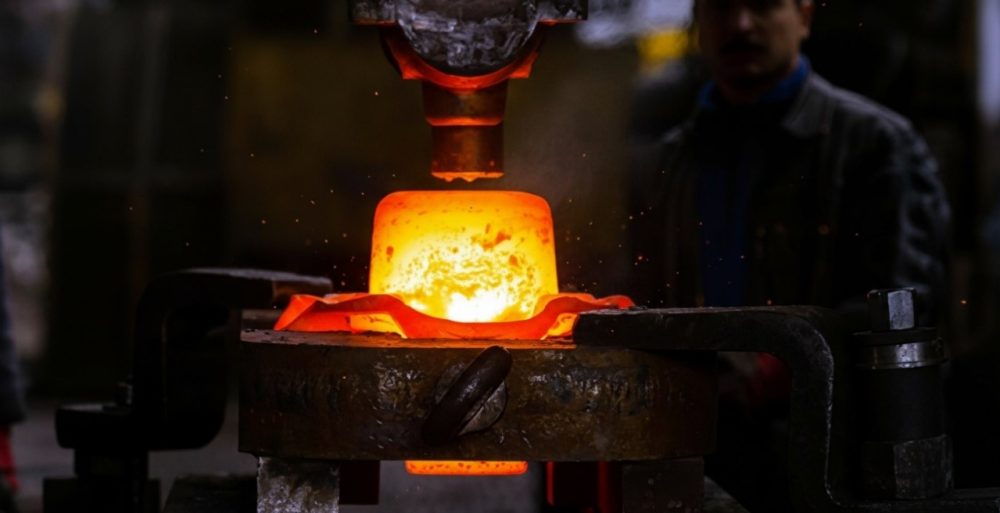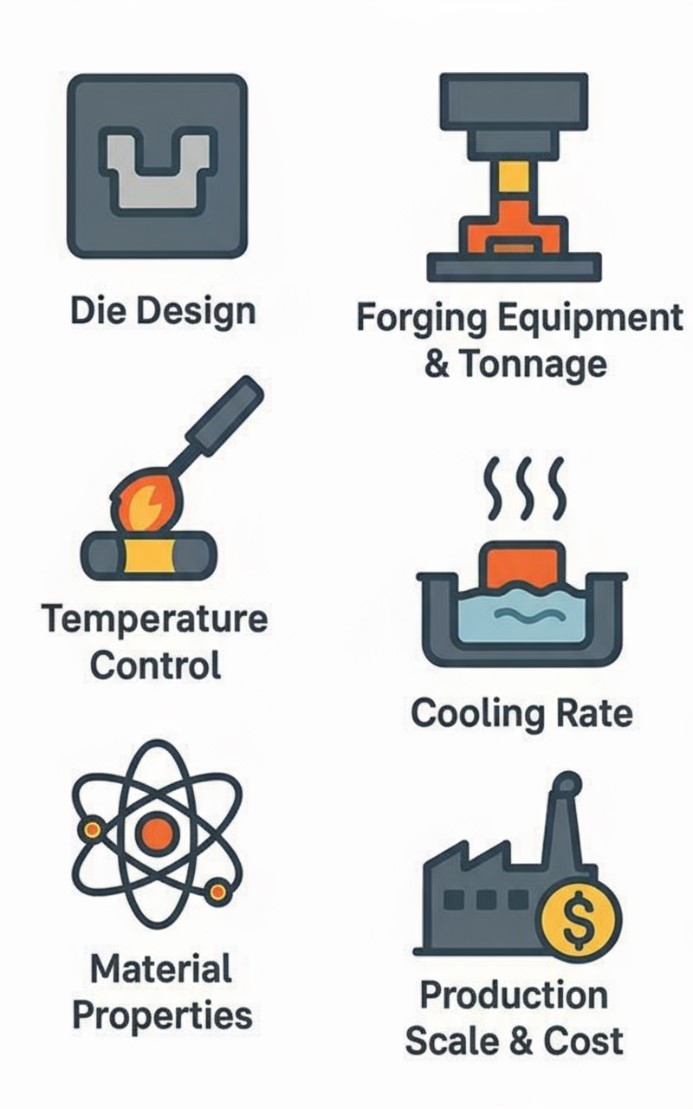Compact Solutions for Components Hot Forging
- Hot forging represents one of the oldest and most effective metalworking processes where metals are shaped through compressive forces while heated to specific elevated temperatures.
- This manufacturing technique transforms raw metal stock into precise, high-strength components by applying controlled pressure through hammers, presses, or specialized machinery while the material remains in a heated, malleable state.
- Forging enhances the grain structure of the used materials, mostly metals, and alloys, hence enhancing the mechanical characteristics of the component and increasing its strength. Advanced hammers and presses are used to manipulate the material into a desired form.
- At Bombay Metrics, we specialize in Hot forging solutions for automotive and industrial applications by combining advanced die design, precise temperature control, and global-quality standards.
Understanding Hot Forging Fundamentals
- Material Flow Control: The heated metal flows around dies and tooling, filling complex geometries while maintaining structural integrity.
- Grain Refinement: The forging process breaks down coarse grain structures and reforms them into finer, more uniform patterns.
- Work Hardening Elimination: High temperatures prevent strain hardening, keeping the material workable throughout the process.
- Consolidation: Internal voids and porosity are compressed and eliminated, creating dense, solid components.
Key Characteristics of Hot Forging
- High Temperature Forming
- Metals are heated above their recrystallization temperature (typically 750°C – 1250°C for steel, lower for aluminum).
- This makes the metal more malleable and easier to deform.
- Improved Mechanical Properties
- Grain refinement and uniform microstructure enhance strength, toughness, and fatigue resistance.
- Parts gain better impact resistance compared to casting or machining.
- Enhanced Ductility
- High temperature prevents cracking, enabling the production of complex shapes with thin sections and intricate details.
- Refined grains make the material more flexible and less brittle, enabling complex shapes to be formed.
- Better Surface Finish & Accuracy
- Hot forging produces parts with smoother surfaces and reduced porosity.
- Secondary machining requirements are minimized.
Factors Affecting Hot Forging
- Die Design
- Forging Equipment & Tonnage
- Temperature Control
- Cooling Rate
- Material Properties
- Production Scale & Cost
Hot Forging Process Complexity
- Temperature Control
- Metals must be heated above their recrystallization temperature to achieve proper ductility.
- Precise heating is essential; overheating causes oxidation and grain growth, while underheating increases tool wear and defects.
- Material Flow
- Ensuring uniform material flow inside the die is critical.
- Poor flow can lead to defects such as laps, cold shuts, or incomplete filling.
- Die Design & Lubrication
- Complex geometries require carefully designed dies with proper draft angles, fillets, and ribs.
- Lubrication reduces friction, prevents sticking, and extends tool life.
- Cooling & Heat Treatment
- Post-forging cooling must be carefully controlled to avoid internal stresses or distortion.
- Many forged parts undergo secondary heat treatments for improved hardness and strength.
- Quality Control
- High-precision inspection methods are required to detect surface defects, dimensional errors, or microstructural inconsistencies.
Hot Forging Temperature Ranges for Optimal Results
- Temperature control serves as the critical factor determining forging success and final product quality.
- Each metal type requires specific temperature ranges to achieve optimal formability while preventing defects like cracking, burning, or incomplete filling.
- The temperature for forging steel can get up to 2,100 °F (1,150 °C)
- Copper alloys up to 1,470 °F (800 °C)
- Aluminum alloys up to 930 °F (500 °C)
Bombay Metrics Ideology in Forging Process
- Material selection: Selecting the right material is one of the most critical decisions in the hot forging process. The choice directly impacts the strength, durability, machinability, and cost of the final component. At Bombay Metrics, we help customers choose the most suitable forging material by balancing performance requirements with cost-effectiveness.
- Design complexity: Hot forging is better suited for complex shapes because the workpiece is more ductile and easier to work with. Our design engineering team provides the best solution with tight tolerances.
- Production scale: Hot forging is highly versatile and can be adapted for Small, Medium, and Large-Scale Production.
- Cost implications: The cost of hot forging depends on raw materials, tooling, and production volumes. Though it involves a higher upfront investment, it delivers long-term value through strength, durability, and reduced secondary processing needs.
Bombay Metrics Smart Decision & Strategy for Our Customers
- We discover the fundamental principles that make hot forging work, including temperature control and material behavior under heat.
- We cover essential equipment and tools needed — from furnaces to hammers — for customer operations.
- We provide material selection strategies that ensure projects deliver the strength and quality your applications demand.
- Our team works closely with clients during the DFM stage to balance performance, complexity, and cost, making hot forging an ideal choice for high-demand industries.
At Bombay Metrics
- We combine optimized processes and strict quality control to deliver forging solutions that meet global standards.
- Our commitment to innovation, efficiency, and customer-centric solutions ensures that every forged part not only meets design requirements but also delivers long-term performance.
- Choosing Bombay Metrics means choosing a partner who understands the science, complexity, and value of hot forging—helping you achieve reliable, cost-effective, and sustainable manufacturing outcomes.



